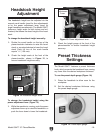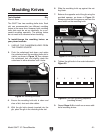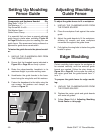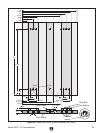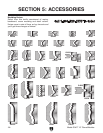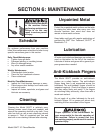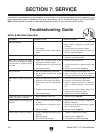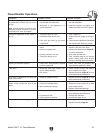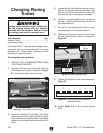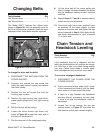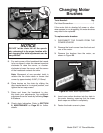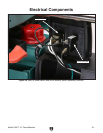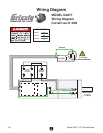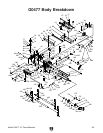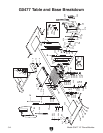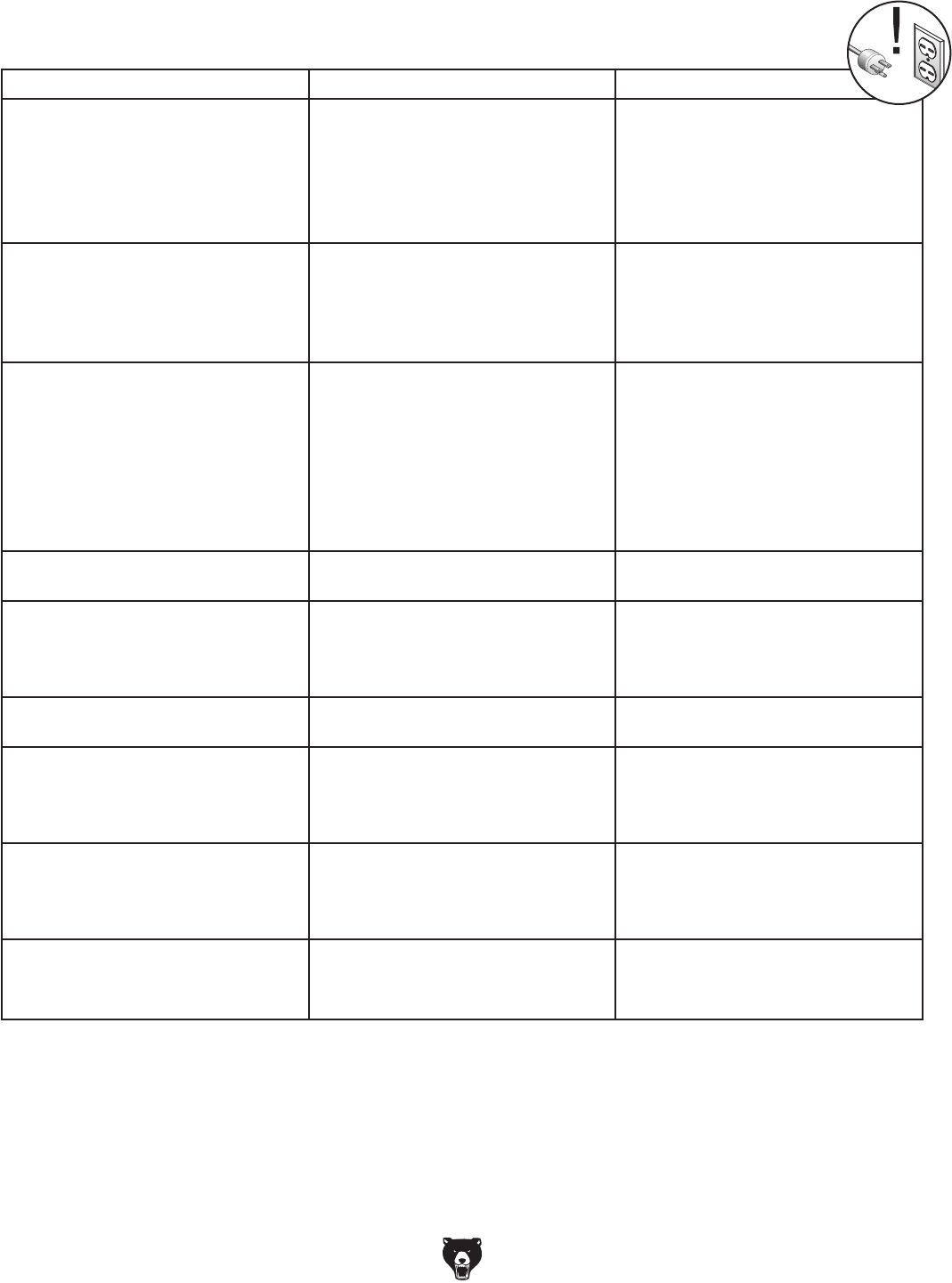
Model G0477 15" Planer/Moulder
-27-
Planer/Moulder Operations
Symptom Possible Cause Possible Solution
Excessive snipe (gouge in the end of
the board that is uneven with the rest of
the cut).
Note: A small amount of snipe is inevi-
table with all types of planers. The key is
minimizing it as much as possible.
1. Outfeed extension slopes down or is
not level with the main table.
2. Workpiece is not supported as it
leaves the planer.
1. Shim the outfeed extension wing level
with the main table.
2. Hold the workpiece up slightly as it
leaves the outfeed end of the planer.
Workpiece stops/slows in the middle of
the cut.
1. Taking too heavy of a cut.
2. Headstock height set too low.
3. Pitch and glue build up on planer
components.
1. Take a lighter cut.
2. Slightly raise the height of the head-
stock.
3. Clean internal cutterhead components
with a pitch/resin dissolving solvent.
Chipping (consistent pattern). 1. Knots or conflicting grain direction in
wood.
2. Nicked or chipped knife.
3. Feeding workpiece too fast.
4. Taking too deep of a cut.
1. Inspect workpiece for knots and grain
direction; only use clean stock.
2. Replace the affected knife (Page 28),
or have it sharpened.
3. Slow down the feed rate.
4. Take a smaller depth of cut. (Always
reduce cutting depth when surface
planing or working with hard woods.)
Chipping (inconsistent pattern). 1. Chips aren't being properly expelled
from the cutterhead.
1. Check and clean fan housing and
dust collection system for debris.
Fuzzy grain. 1. Wood may have high moisture con-
tent or surface wetness.
2. Dull knives.
1. Check moisture content and allow to
dry if moisture is too high.
2. Replace the knives (Page 28) or have
them professionally sharpened.
Long lines or ridges that run along the
length of the board
1. Nicked or chipped knife(s). 1. Replace the knives (Page 28) or have
them professionally sharpened.
Uneven knife marks, wavy surface, or
chatter marks across the face of the
board.
1. Feeding workpiece too fast.
2. Knives not installed evenly.
3. Worn cutterhead bearings.
1. Slow down the feed rate.
2. Adjust the knives so they sit on both
knife location collars.
3. Replace cutterhead bearings.
Glossy surface. 1. Knives are dull.
2. Feed rate too slow.
3. Cutting depth too shallow.
1. Replace the knives (Page 28) or have
them professionally sharpened.
2. Increase the feed rate.
3. Increase the depth of cut.
Uneven or crooked moulding pass. 1. Fence guide not adjusted correctly. 1. Ensure guide boards are parallel and
adjusted correctly (Page 22)



